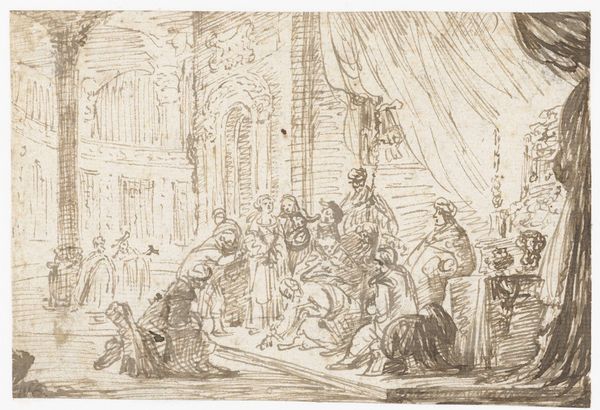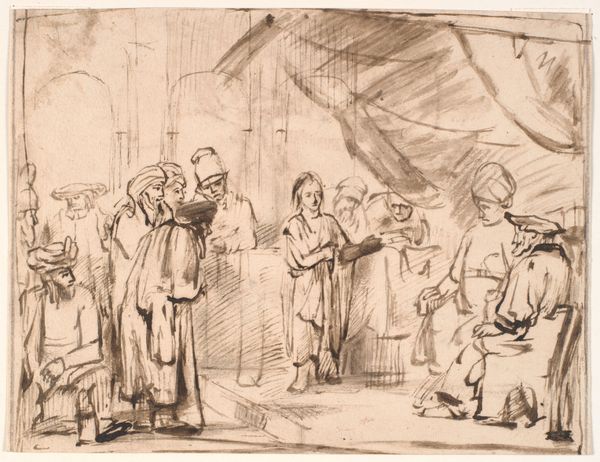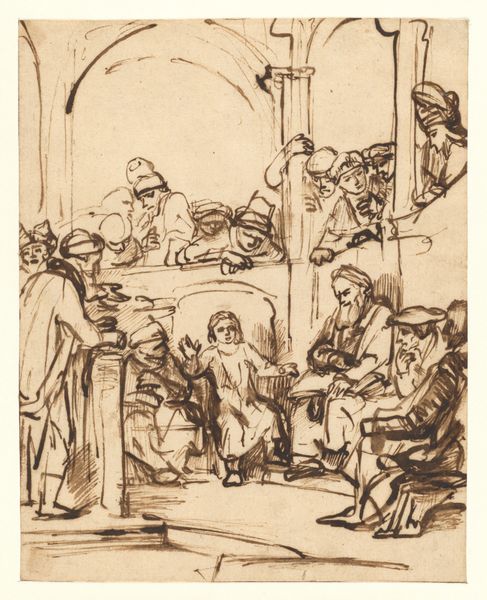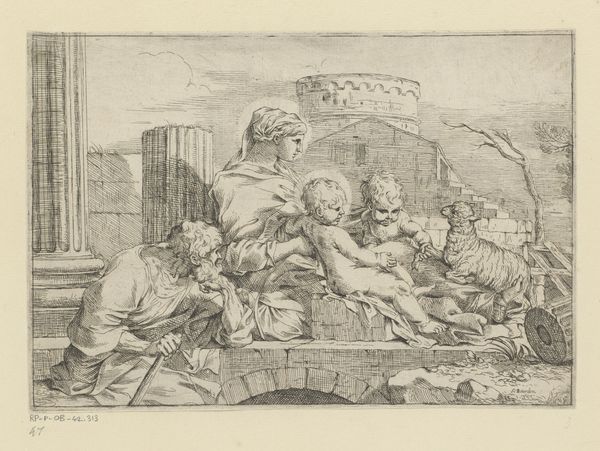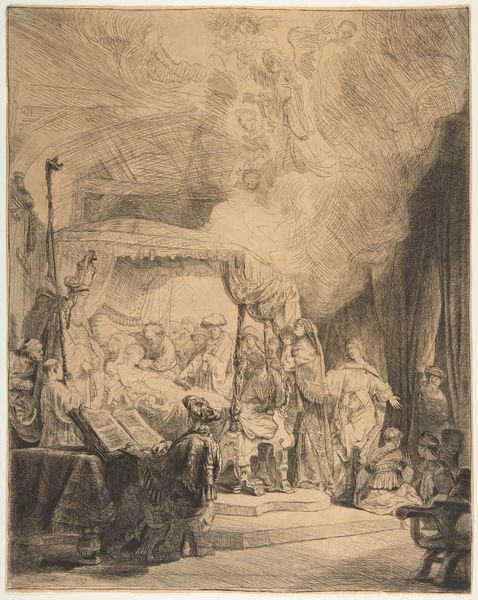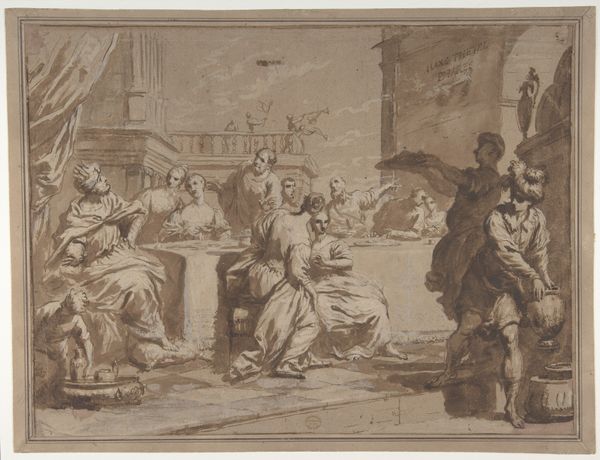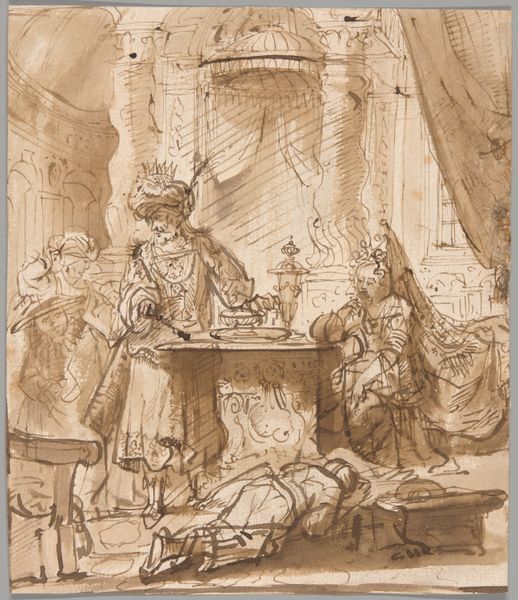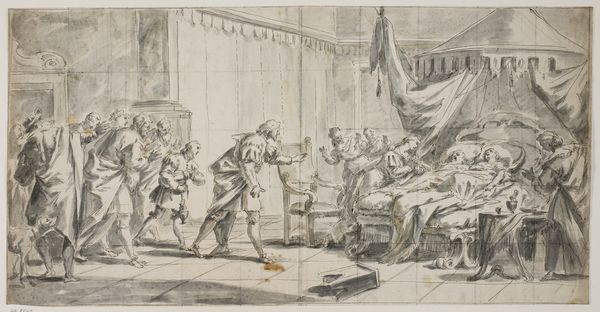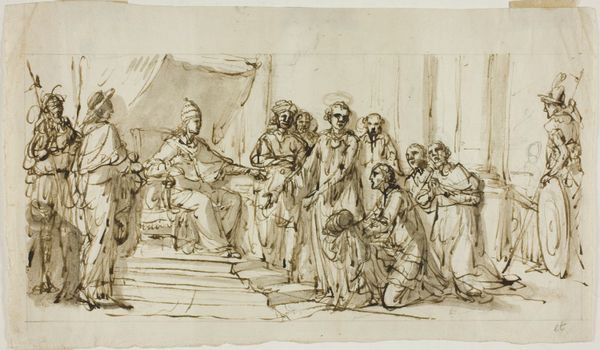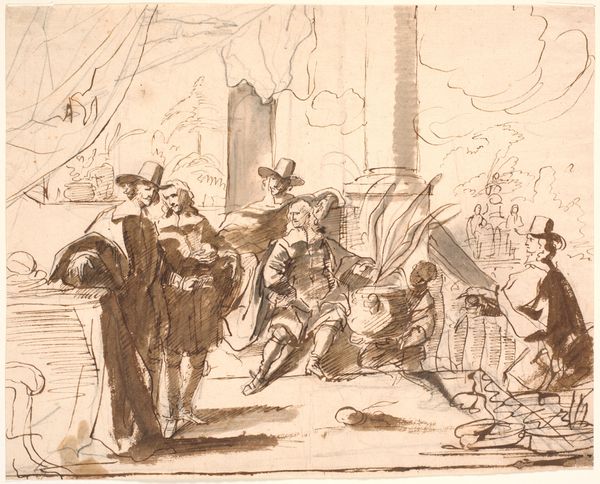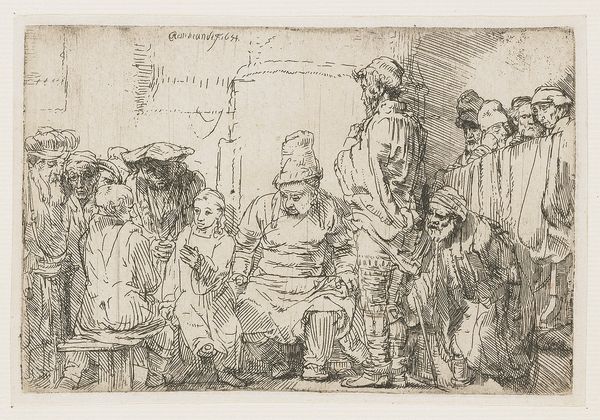
drawing, ink, pen
#
drawing
#
ink drawing
#
baroque
#
pen sketch
#
figuration
#
ink
#
pen
#
history-painting
Copyright: Public Domain
Curator: Samuel van Hoogstraten's "Circumcision of Christ," created in 1649, captures a pivotal, yet often glossed over moment in the life of Jesus. Editor: There’s a compelling stillness amidst the activity here; an almost private moment made public. The heavy use of ink gives it a weighty, solemn feel. Curator: Absolutely. This work, housed at the Städel Museum, allows us to consider the rituals, particularly those concerning bodily autonomy, that have shaped religious identity. We must remember that within the Jewish faith, circumcision carries enormous symbolic weight. Editor: It's fascinating how Hoogstraten uses light and shadow to draw our eyes to the infant Jesus. You get a sense of the political dimensions here as well; questions of lineage and religious authority all wrapped up in this single act. The imposing architecture dwarfs the figures. Curator: Precisely. The scene isn't just a historical depiction; it's an assertion of the enduring power dynamics inherent in patriarchal religious structures. I think about what this rite means for male identity and consider the complicated ways in which the divine and the physical intersect in this crucial scene. The pen and ink medium provides an immediate feel. Editor: It makes me think about the broader performance of power and tradition and how those in attendance participate or are subject to it. It’s worth asking whose voices and experiences are absent from this image. The architecture and design surrounding the circumscision seem to reinforce ideas of hierarchy. Curator: An essential question. Understanding the visual language present, who it serves, and whose narratives remain unrepresented—becomes a responsibility when looking at art that has historical and social contexts. We must also reflect upon our own positions, challenging how power and oppression operate within these legacies. Editor: Agreed, this work forces a look at a historic intersection of faith, culture, and politics. Curator: It's an invitation to critically examine our own historical moment, the image reflects how rituals and beliefs persist and evolve over time. Editor: A powerful statement to make through such intricate and, initially, understated lines.
Comments
No comments
Be the first to comment and join the conversation on the ultimate creative platform.
